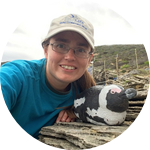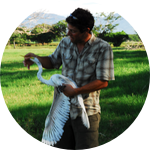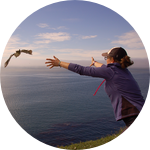Seabirds
Categories
Seabirds fly and swim from continent to continent. They know no borders. They're important for the ecosystem. Studying seabirds helps us understand how our environment is changing and potentially determine what we can do to protect it.
The Projects
Browse the participating projects
Can Hookpods and reusable LED lights reduce albatross deaths and marine pollution?
Endangered albatrosses and other seabirds are accidentally killed in longline fisheries around the world...
Seeking Safer Skies for Haiti's Rarest Seabird
The goal of our research is to reduce collisions of critically endangered Black-Capped Petrel with communication...
Establishing a new African Penguin Colony: predator monitoring
African Penguin numbers are decreasing due to a lack of prey (sardine & anchovy) on the west coast of...
The Mystery of the Disappearing Seabirds: Using Science to Protect Caribbean Seabirds
Seabirds are among the most endangered of all vertebrate groups. Loss of Caribbean populations is ongoing;...
Where are endangered California least terns spending their winters?
Wintering habitats of California least terns remain unknown, despite having terns being listed as endangered...
Tracking ‘flying penguins’: pelagic distribution and threats of South Georgia Diving Petrels
The South Georgia Diving Petrel is a tiny, highly specialized, wing-propelled diver; a 'flying penguin...
Where is this vulnerable Indian Ocean seabird feeding? Using micro-GPS to track seabirds in the Indian Ocean
Thankyou all! Please continue as it all helps! I have studied the Lesser Noddy at the Houtman Abrolhos...
Say “cheese”: Using automated cameras to assess the status of a threatened seabird
The introduction of non-native goats to an important Chilean seabird island may impact the breeding of...
Blinded by the light: reducing shearwater deaths along a coastal highway in O'ahu, Hawai'i
Wedge-tailed Shearwater chicks are attracted to lights and grounded due to collisions with utility wires...
Plastic marine debris: it’s what you don’t see that may be worse for Arctic Seabirds
Plastic debris is choking our ocean ecosystems, including the Bering Sea. In this region, the seabirds and...
What factors are causing seabird declines in the Grenadines?
Seabird populations are declining. Seabirds face a number of threats in marine and terrestrial habitats...
More About This Challenge
The sciency details
Challenge Aims
We are seeking proposals from seabird researchers. We will select roughly 15 projects to join the Seabird Challenge Grant Program. Each project will run as an individual campaign. The projects will all launch on the same day for 30 days.
In the 3rd week the Experiment project that finishes with the most backers will receive an additional $1,000 grant. The two runner up projects will receive $250 each.
Project Eligilibity
All projects related to seabirds are eligible.











 Challenge Grants
Challenge Grants